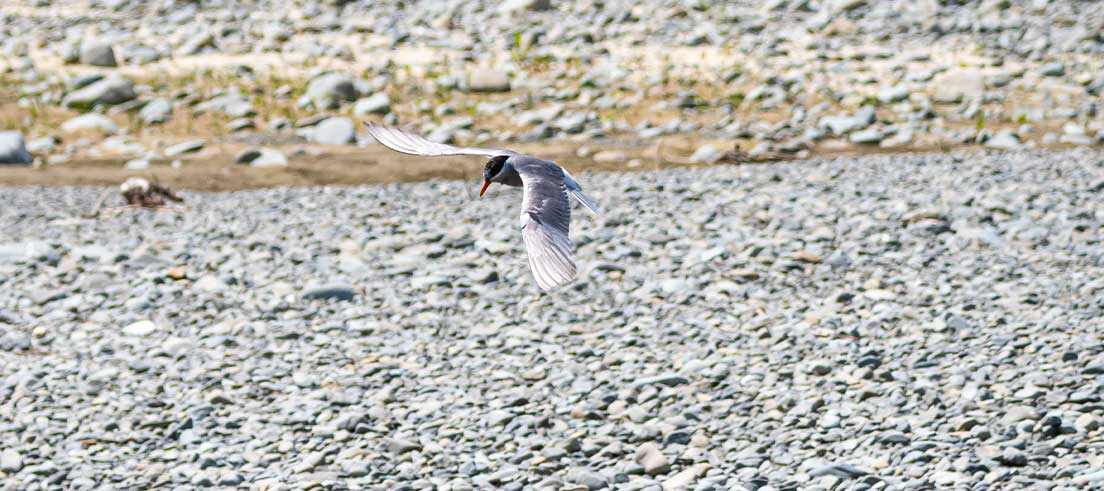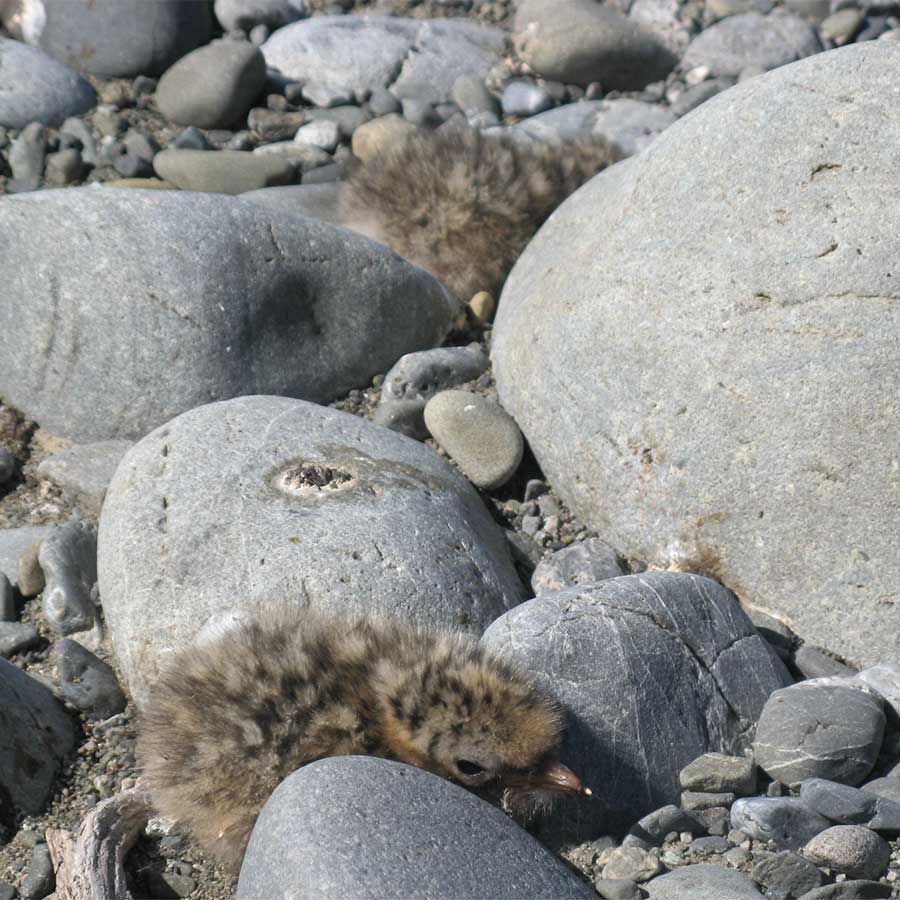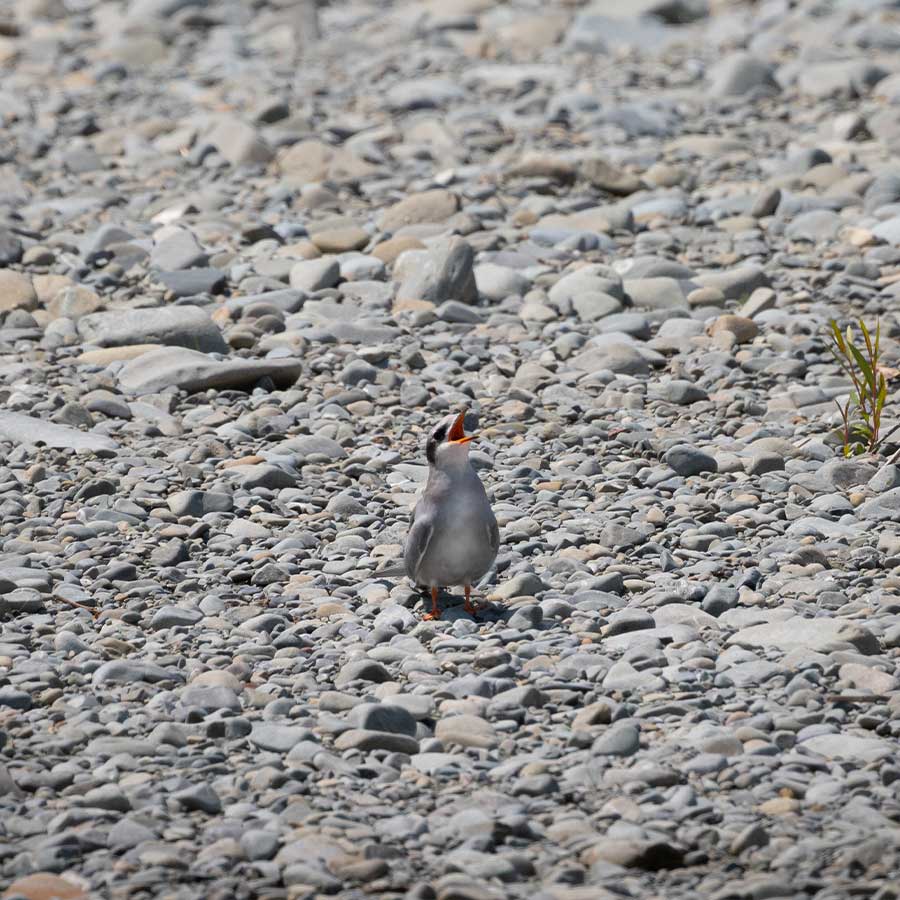
Rare braided river birds in Hurunui protected for another season
We have awarded a further $50,000 to help fund the work of the Hurunui Waiau Braided River Birds Flagship Programme through its Zone Committee Action Fund.
Over the last six years, this collaborative programme has worked to protect braided river bird habitats on the Hurunui and Waiau Uwha Rivers with incredible success.
Its work has primarily focused on black-fronted terns due to their endangered status, population decline and colonial nesting habitats. So far, the results have been very positive. Black-fronted terns on river islands enhanced by the group were able to achieve a 98% hatching success compared to much lower rates on natural, unenhanced islands or sites on the mainland.
“This is an important initiative to protect the mauri of some of Hurunui’s taonga, our unique river birds. It’s an example of what can be achieved when mana whenua, community groups, individuals and government agencies work together to improve biodiversity on our precious local rivers,” said Councillor Iaean Cranwell, Chair of the Water and Land Committee.
This new round of funding has gone to support habitat enhancement and monitoring for this year’s breeding season which began in September. It will help ensure the continuity of the work that’s gone on over the last six years and maintain the conservation gains already achieved.
Protecting nesting sites
Braided rivers are rare ecosystems. The plants and animals that live on them are highly adapted to living in the rivers’ dynamic physical environment.
"In New Zealand, our braided rivers support high levels of endemic, threatened, or at-risk species," said James Schaap, Land Management and Biodiversity Advisor. "Many of these species are either unique to the braided river environment or dependent on it to complete a critical life phase. Canterbury has two-thirds of New Zealand’s braided rivers."
In 2017, the Hurunui Waiau Uwha Water Zone Committee hosted a meeting of braided river experts to identify the key values, threats, and gaps for braided river biodiversity management in their region. Together, they agreed that a strategic management approach to address the multitude of threats facing our braided river ecosystems was urgently needed.
This group formed the Hurunui Biodiversity Trust which now works to protect the rare species living on the Hurunui and Waiau rivers in partnership with the Department of Conservation (DOC), community groups and landowners.
Managed breeding islands
Braid islands provide the best breeding habitat for many species of braided river birds.
The Braided River Birds Flagship Programme, with the help of DOC, has focused on habitat enhancement, trapping predators and monitoring efforts.
Some of the ongoing work to improve habitats:
- Deepening channels around breeding islands to create a ‘moat effect’, discouraging predators from reaching the islands.
- Adding and shifting gravel to the top of islands to add height. This protects the islands from flooding which can sweep away nests.
- Predator trapping to lessen the number of raided nests.
Monitoring of breeding sites
The group has also conducted ongoing monitoring of breeding success rates both on and off the managed islands to identify the best interventions for future efforts.
The results on the Waiau River speak for themselves. In the last season, black-fronted tern achieved 96% hatching success of one or more chicks on the protected Shark’s Tooth Island. This compared to 64% on the natural islands that the group monitored and only 9% on the mainland.
"This is really impressive in a challenging environment, it proves the efficacy of the interventions we have undertaken and it makes a good case for further investment," said James.
Unfortunately, at the enhanced island on the Hurunui, NIWA Island, no black-fronted tern colony was established this season. This was most likely due to disturbance from other river users such as clay pigeon shooting. Happily, banded dotterels did successfully breed on the island. Breeding activity has been recorded for all past seasons of the project at NIWA Island.
Predator trapping resulted in a total of 175 target species caught at NIWA Island and 73 caught at Shark’s Tooth Island.
Project goals and long term-vision
Project goal
The medium-term (five-to-ten-year) goal for this project is to see a hopeful future for the braided river birds in the Hurunui.
Specifically, we would like to see:
- Stable or increasing populations of endangered black-fronted tern/ tarapirohe and black-billed gull/ tarāpuka.
- Implementation of a considered management plan that finds a good balance between action, monitoring and costs and a better understanding of the most cost-effective initiatives.
- Easily available, user-friendly, high-quality information on the programme’s design and results so it can be used for future research.
Long-term vision
By 2040 we want to see native braided rivers birds flourishing on our rivers.
We will know we have succeeded when:
- Braided river birds such as the black-fronted tern/tarapirohe, wrybill/ngutuparore, black-billed gull/tarāpuka are thriving on the Hurunui and Waiau Uwha Rivers.
- Mana whenua, community, and landowners support and co-lead this work.
- There are adaptive, enduring structures/ social arrangements in place to support the increasing health and mauri of these rivers/awa.


